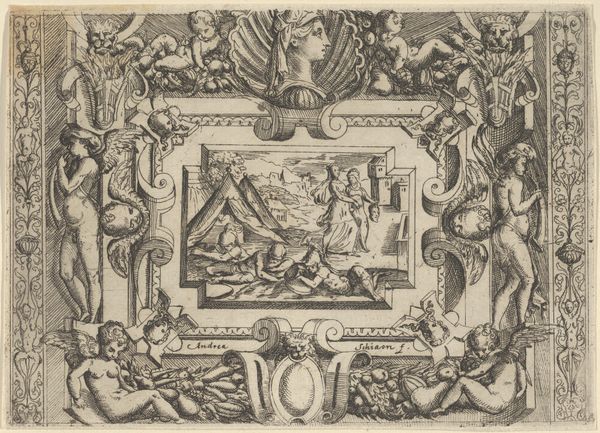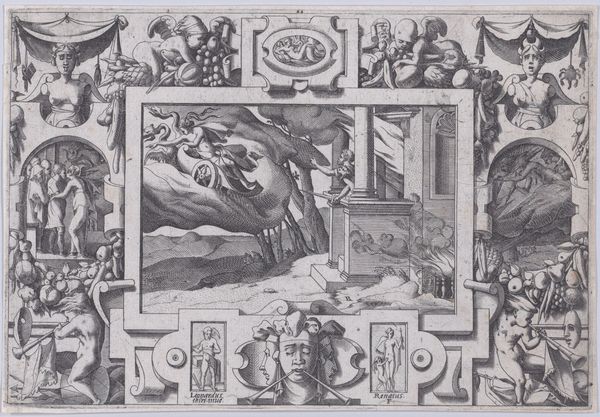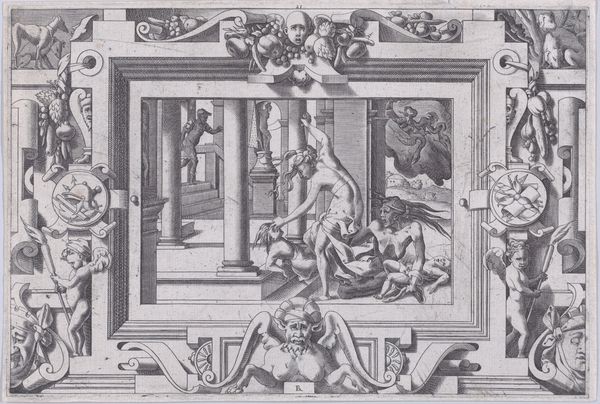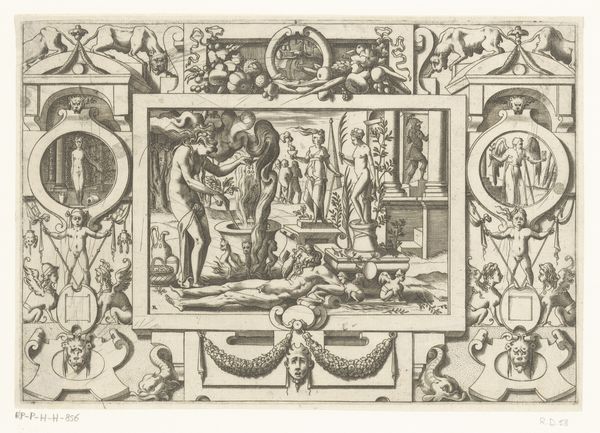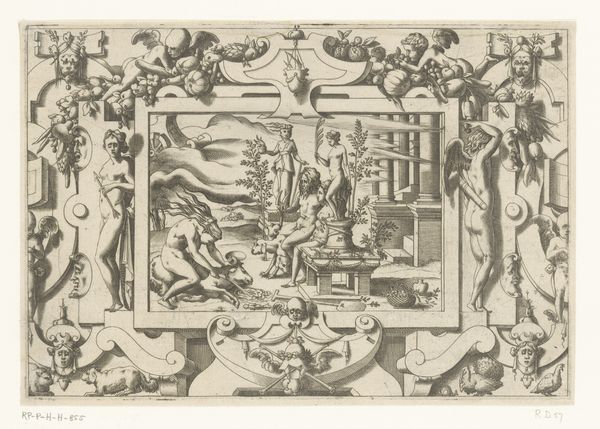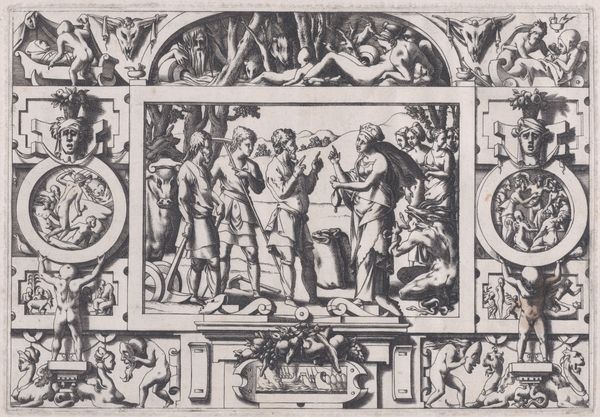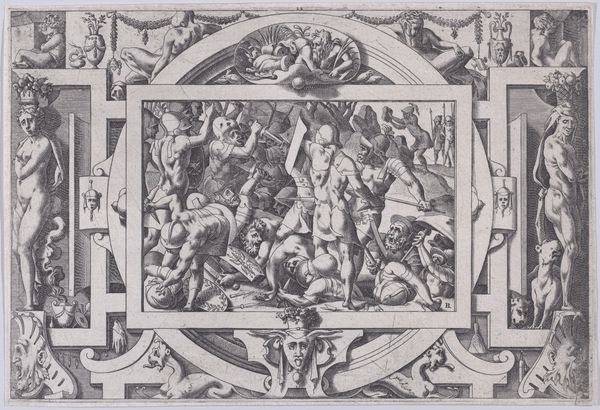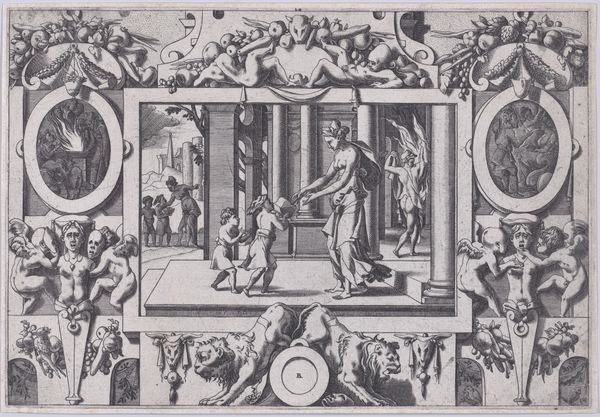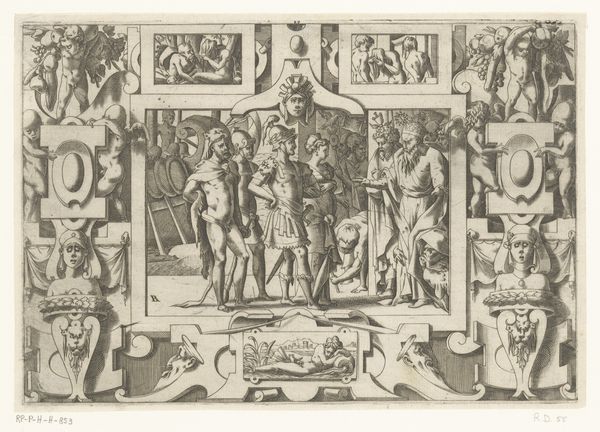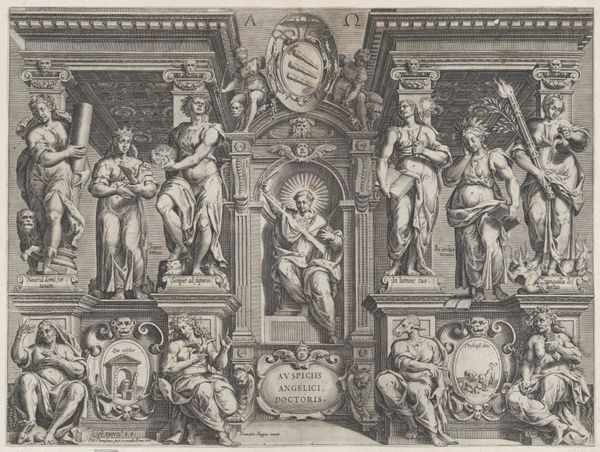
Pelias Killed by his Daughters (Dont par pitié elles prennent courage son sang vider par violent outrage...), from "Jason and the Golden Fleece" 1563
0:00
0:00
drawing, print, engraving
#
drawing
#
ink drawing
# print
#
pen sketch
#
mannerism
#
figuration
#
11_renaissance
#
line
#
history-painting
#
engraving
Dimensions: Plate: 6 5/16 × 9 in. (16 × 22.8 cm) Sheet: 9 in. × 13 1/16 in. (22.9 × 33.2 cm)
Copyright: Public Domain
Editor: This is "Pelias Killed by his Daughters" created in 1563 by René Boyvin, it's an engraving, currently at the Metropolitan Museum of Art. It’s a flurry of frantic energy, framed by these rather languid figures at the bottom. What strikes you most about this piece? Curator: Oh, it's a darkly fascinating one, isn't it? Beyond the immediate drama of patricide—fathers, beware!—I see a real dance between classical ideals and Mannerist anxieties. The frame, bursting with putti and garlands, feels almost…claustrophobic. It’s like joy is trying to break in, but the center is all shadow and sharp angles. The Mannerists loved to play with that tension: beauty and the grotesque, all jumbled together. Does the busyness amplify the disturbing elements for you? Editor: Definitely! The contrast is very effective. So it's more than just a depiction of a grisly scene. Curator: Oh, my dear, rarely is art "just" anything. Think of the Golden Fleece story. Pelias was tricked into this situation, promised youth by his daughters if they rejuvenate him. What is justice here? Or perhaps more interesting: what does rejuvenation mean, even if through deceit? Editor: So, it’s about misplaced trust, perhaps? And how the pursuit of eternal youth can lead to horrifying acts? Curator: Precisely! Though I also think of Boyvin working with this level of detail, inking his vision for the ages. Doesn’t that attention echo the original myths: how far would someone go to be remembered? Editor: It does now! That makes the frenetic energy, as well as the quieter repose of figures within the decorative frame, feel even more meaningful. Curator: The question the artwork presents me, now, is not simply what is rendered within it, but what compelled me to attend it at all, a few centuries removed from its genesis. What a treasure that even Boyvin may never have known about his artwork.
Comments
No comments
Be the first to comment and join the conversation on the ultimate creative platform.
